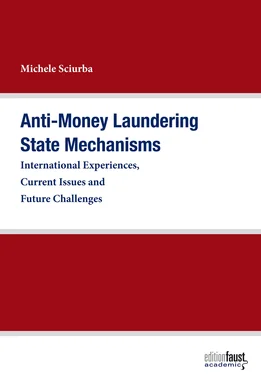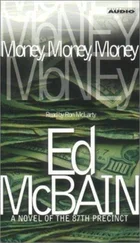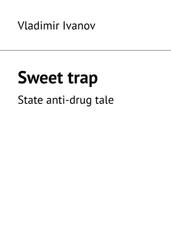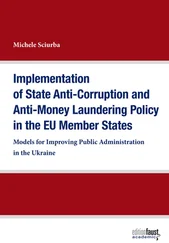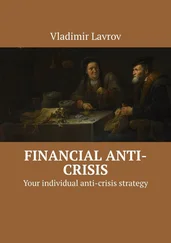53B Zagaris, ‘The Merging of the Anti-Money Laundering and Counter-Terrorism Financial Enforcement Regimes after September 11, 2001’ (2004) Berkeley J. Int’l L. 22(1) 135.
54ibid.
55EJ Gouvin, ‘Bringing out the Big Guns: the USA PATRIOT ACT, Money Laundering, and the War on Terrorism’ (2003) Baylor L Rev 55, 981 f.
56See O Thränert, ‘Ein historischer Durchbruch? Obama und das Atomabkommen mit dem Iran’ (2017) Z Außen Sicherheitspolit 10(2) 155 f.
57W Blair, R Brent and T Grant, Banks and Financial Crimes: The International Law of Tainted Money (2nd edn, OUP 2017) 504 f.
58U.S. Department of the Treasury, ‘Guidance relating to the Lifting of Certain U.S. Sanctions Pursuant to the Joint Comprehensive Plan of Action on Implementation Day’ (16 January 2016). – In general, export controls for goods are also required as well as a special license for the export or reimport of goods to Iran. It is further prohibited to mediate or provide advice on a wide range of financial transactions affecting Iran. See Iranian Assets Control Regulations , 31 CFR pt 535 and Iranian Stabilization and Insurgency Sanctions Regulations , 31 CFR pt 576.
59Council Regulation (EC) No. 2271/96 Protecting against the Effects of the Extra-Territorial Application of Legislation Adopted by a Third Country, and Actions Based Thereon or Resulting Therefrom [1996] OJ L 309/1.
60Trading with the Enemy Act of 1917 (TWEA) (Pub. L. 65-91).
61Here, see ‘Settlement Agreement between the U.S. Department of the Treasury’s Office of Foreign Assets Control (OFAC) and BNP Paribas SA (BNPP) (COMPL-2013-193659)’ of 2014 and ‘Settlement Agreement between the U.S. Department of the Treasury’s Office of Foreign Assets Control (OFAC) and Commerzbank AG (Commerzbank) (FAC No. 713262)’ of 2015.
62SK Dehghan, ‘Europe’s Big Banks Remain Wary of Doing Business with Iran’ ( The Guardian , 24 January 2016) < https://www.theguardian.com/world/2016/jan/24/europes-big-banks-remain-wary-doing-business-with-iran> accessed 30 August 2017.
63UNGA International Convention for the Suppression of the Financing of Terrorism (adopted 9 December 1999, opened for signature 10 January 2000, entered into force 10 April 2002) (2000) 39 ILM 270. – See in particular Article 18(1) in terms of KYC requirements and SAR filing, and Article 18(2) in terms of the obligation of signatory states to cooperate on preventing TF.
II.
The Global Financial Crisis’ Worldwide Impact on the Implementation of Anti-Money Laundering Standards in the OECD Countries
II.1 The Extension of International Anti-Money Laundering Objectives
The Global Financial Crisis (GFC) of 2008/2009 was an international threat to the overall stability of the financial markets in the Western world and revealed significant gaps in the national financial regulatory regimes and international financial law. It originated with the collapse of the US real estate market, as the leading banks and financial institutions in Europe and the world adopted complex securitisation processes the US financial institutions used to create mortgage-related securities. In the course of the evolving crisis, Lehman Brothers went bankrupt, the largest insurance group of the world, AIG, had to be nationalised by the US government, and bailouts of various state banks became necessary in Germany. The EU, the United Kingdom (UK) and the US provided billions to avoid a collapse of the financial markets. 64The fact that even the US financial system was not immune to the risk of a systemic financial crisis was decisive for the creation of a new system of global financial market regulation. In order to set new global regulatory standards, the G20 remodelled the Financial Stability Forum (FSF) into the Financial Stability Board (FSB). The main objective of restructuring has been the implementation of a macro-prudential supervision of the financial system to prevent systemic risks. 65Accordingly, the new supervisory system within the EU, the European Systemic Risk Board (ESRB), focuses on macro-prudential supervision.
In view of the lessons learned from the GFC, the UK and many other industrialised countries established risk-based regulation at national level. Since 2009 at the latest, the International Organization of Securities Commissions (IOSCO) guidance 66has established the risk-based approach as global standard in most economies. 67Although the GFC has not created a new approach to AML and CTF regimes, it has accelerated the creation of a transnational network in the fight against organised crime, corruption, and terrorism financing, and led to the criminalisation of tax evasion. 68Having said that, the USA Patriot Act had already intensified the fight against ML and TF in the US before the GFC by including tax evasion as an offence in section 371(a)(3). At the EU level, the Third Anti-Money Laundering Directive (3rd AMLD) 69implemented the FATF 40+9 Recommendations prior to the crisis, integrating CTF into existing AML objectives. 70In the UK, the 3rd AMLD was implemented into national law in 2007.
The GFC placed the focus on significant problems such as the lack of macro-prudential supervision, the immense costs that the individual states have had to bear for restoring financial market stability, and the moral hazard effect. Yet, above all, it raised the question of fiscal and social justice, making the fight against tax evasion a regulatory aim. 71Coupled with increased international cooperation and coordination to prevent systemic risks in order to maintain financial market stability, the GFC has intensified international AML/CTF cooperation. The integration of tax offences into the global AML/CTF regime became a new target of the global regulatory strategy of the OECD countries. Today, the catch-all approach of the AML/CTF regulations in the US includes tax offences as a predicate offence for ML. The same is true in the EU under the 4th AMLD. Yet, in contrast to the US, the lack of criminal law harmonisation within the EU member states is a significant problem that will have to be solved in the future.
II.2 Combating Tax Evasion under the Anti-Money Laundering Framework
At the London Summit in April 2009, the industrial nations declared that the fight against tax evasion was a policy priority at the OECD level and the integration of measures against tax evasion were an important part of their AML strategy. 72The final report of the G20 Working Group on Reinforcing International Cooperation and Promoting Integrity in Financial Markets not only contributed to the strengthening and harmonisation of international standards, but also formulated a joint approach to taking action against uncooperative jurisdictions and tax havens. As set out in the report, the G20 Working Group asks all countries to implement the 40+9 FATF Recommendations without delay and, as stated in the following, urges:
[…] the international bodies responsible for prudential and regulatory standards, anti money laundering and terrorist financing, and tax matters – the FSF, the FATF and the OECD – to accelerate their work of identifying uncooperative jurisdictions and developing a toolbox of effective countermeasures against these jurisdictions; they should update G20 Finance Ministers and Central Bank Governors. 73
At the OECD’s insistence and due to rising international pressure, most tax havens signed 12 individual information exchange treaties. The world’s tax havens signed more than 300 treaties in total from April to the end of 2009 in order to bypass the threat of sanctions. 74After the GFC, massive public protests against corporate tax avoidance took place in the US, the UK and many other countries. 75This international outcry led to the implementation of the Foreign Account Tax Compliance Act (FATCA) 76, which regulates the exchange of information concerning US citizens with foreign bank accounts and has been signed by the EU member states and numerous other countries. In 2014, the Automatic Exchange of Information (AEOI) 77, created after the US model, was introduced at the OECD level to provide for a comprehensive automatic exchange of information on financial accounts. The 4th AMLD is a reflection of these agreements that have made the fight against tax evasion a central element of the AML framework.
Читать дальше
